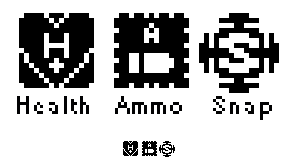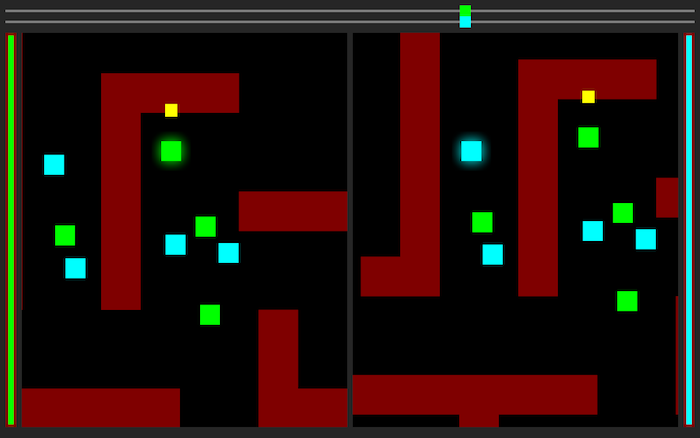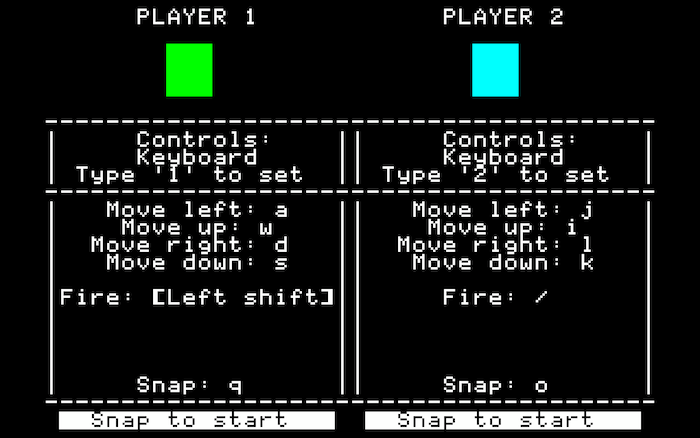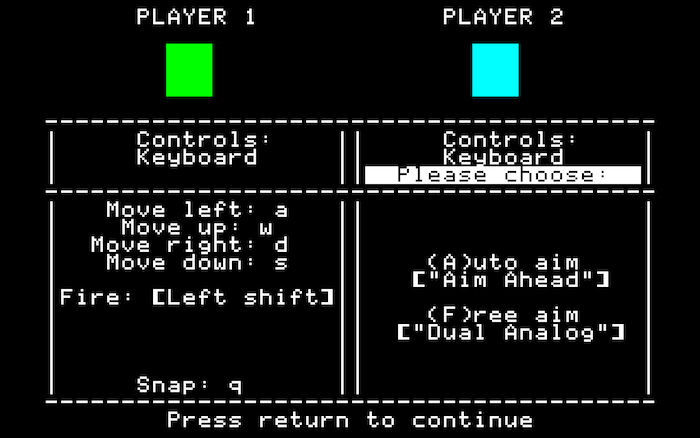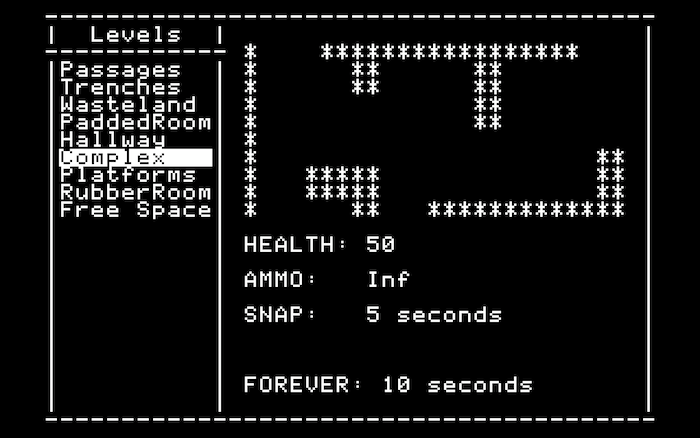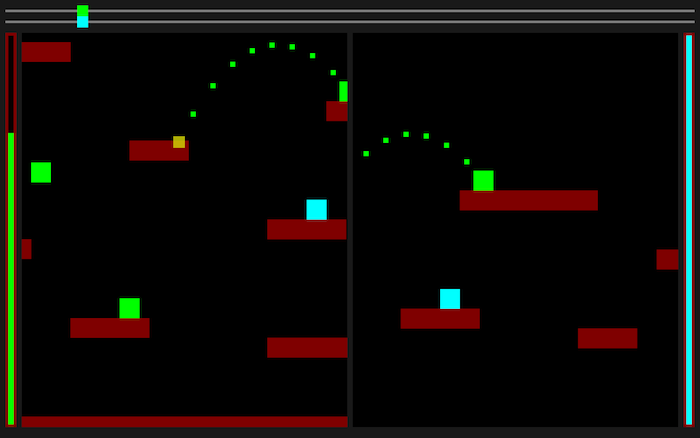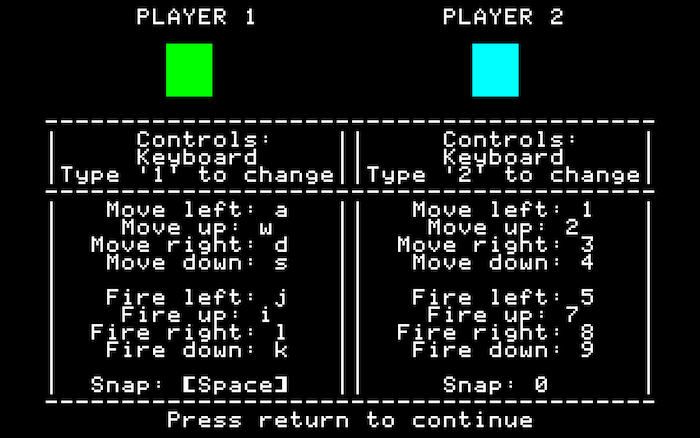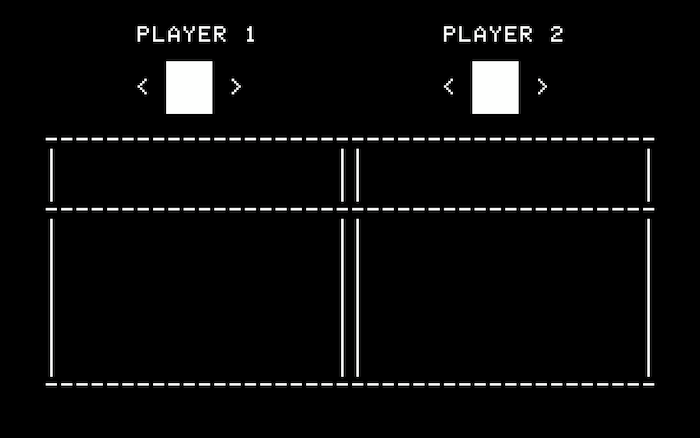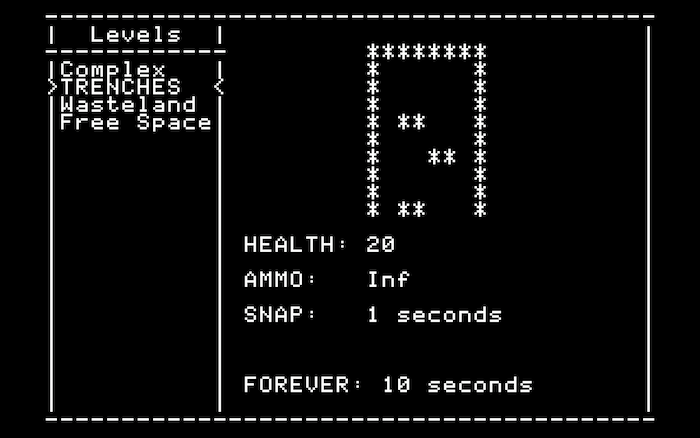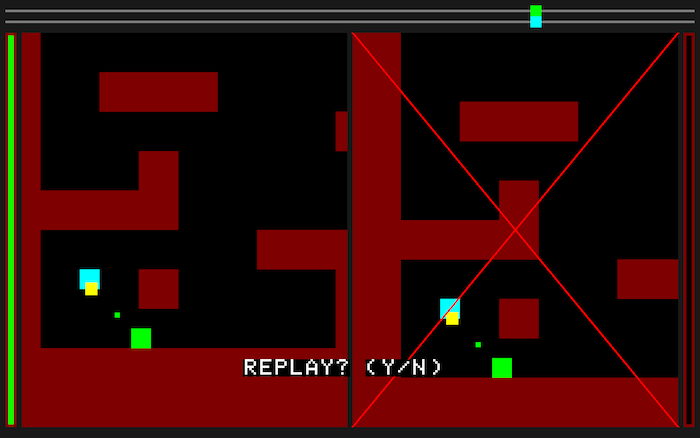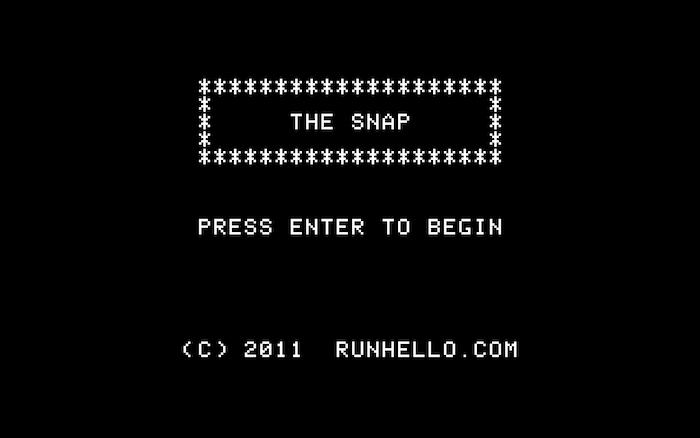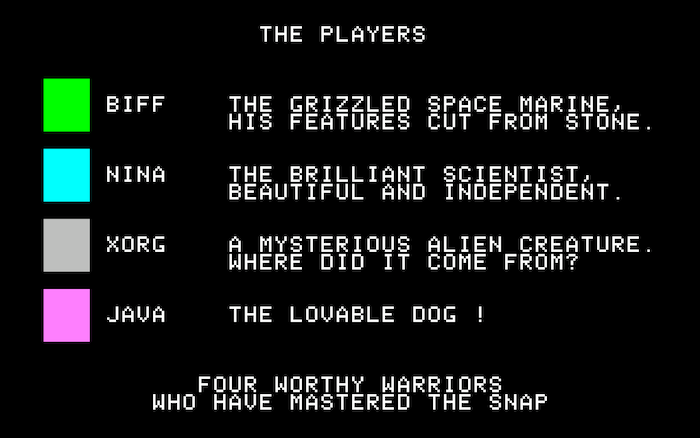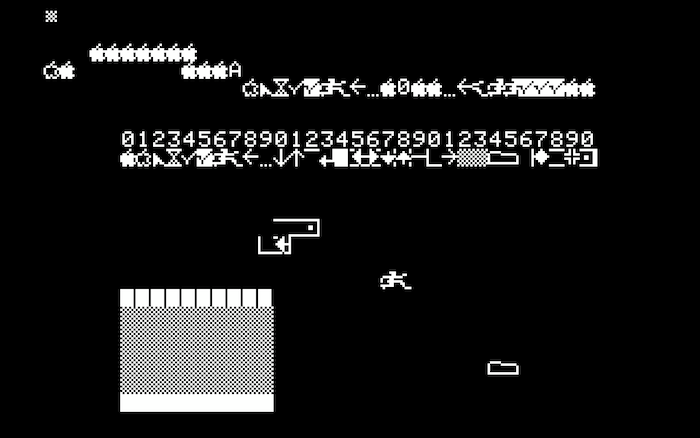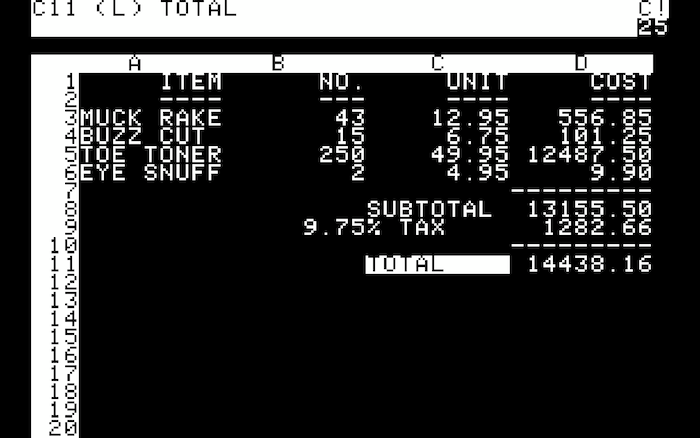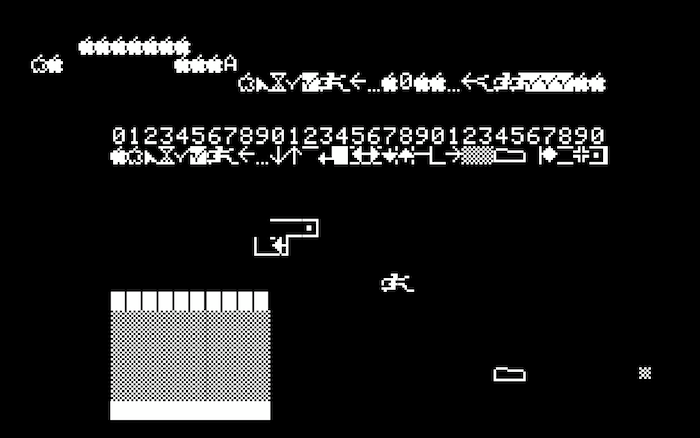Mac build (r171)
Windows build (r171)
Status: Fixed various camera problems, added levels which “loop” (it seemed weird to me that the time axis looped but the x and y axes never did), added levels with gravity, allowed levels to override several other physics defaults, added custom messages for levels, added a level setting called “immortal bullets”. The game is technically like 3x bigger now counting by number of maps.
There is a particular visual glitch associated with the loop levels still. The “Platforms” (gravity) and “RubberRoom” (immortal bullets) levels, which are kind of experiments/jokes, kind of highlight flaws in the engine and I’m not sure whether to keep them in or not.
Guess I might as well document how user-created levels work now. You can create your own levels by dumping .xml and .png files into the same directory as the Snap .exe (or .app). Snap will load all .xml files it finds when it starts up, and when it’s building level maps it will load .pngs in the directory “with the exe” before looking inside the application’s internal folder (in other words it’s possible to override default maps). If you want to see example .xmls and .pngs, look inside the “Internal” folder (or, on the mac, control-click the .app, choose “Show Package Contents”, look in Contents/Resources). You should be able to just copy the default level.xml and edit that; each “level” line is one of the default maps. The “level” attributes, if it’s not already obvious, are defined like:
- “name” – Name in level menu. Required.
- “file” – Png file name to load to construct map. Required unless “padded_room” is true. Notice, EVERYTHING else except these first two attributes is optional and will be replaced with sensible defaults if left out.
- “maxhealth” – Maximum/starting health. An integer greater than zero.
- “std_zoom” – The camera zoom amount. A float value greater than zero.
- “forever_length” – Number of seconds before the timeline “loops”. A float value greater than zero.
- “snap_factor” – Snap distance is calculated by dividing this number from forever_length. This should be an integer which evenly divides forever_length.
- “block_size” – Each pixel in the “file” png will equate to a square with this side length. For scale, a player character is always a square 0.2 units wide and 0.2 units tall. This should be a float value greater than zero.
- “have_camera_freedom” – Determines on which axes the camera may move freely. This is what I’m going to call an “xy mask”, which means it’s an integer equal to either 0 (for “neither axis”), 1 (for “x axis”), 2 (for “y axis”) or 3 (for “both axes”). The default is 3.
- “have_camera_limit” – Determines on which axes the camera halts at the edge of the map. An xy mask. Default is 3.
- “repeat” – Determines on which axes the map “loops”. An xy mask. Default is 3. By the way, I’ve discovered that my old game Jumpman (which also used PNGs for level maps) is an excellent editor for making levels using this feature. Note though unlike Jumpman you shouldn’t try to make levels in which the “repeating” area is so small you can see copies of yourself. This won’t work and trying it will lead to graphical glitching.
- “padded_room” – If set to “1”, the map is discarded and instead a special map is built which is exactly the size of the screen. block_size is honored but this attribute has not been tested to– and probably does not– work with many of the other attributes.
- “immortal_bullets” – If set to “1”, bullets bounce off walls instead of exploding against them. May cause odd things to happen.
- “gravity” – If greater than zero, vertical gravity is enabled. This should be a float equal to or less than zero. The default is of course zero. May cause odd things to happen.
- “w_e”, “p_e”, “b_e”, “w_u”, “p_u”, “b_u” – The elasticity and friction material values assigned to, respectively, the (W)alls, (P)layers, and (B)ullets. Do the documented things e and u do in the Chipmunk physics engine. Of very little use to you unless you are playing with gravity (I still haven’t found a good value to set friction to with gravity, so the “Platforms” level things move like on ice).
- “message” – If present, the contents will be shown on the level select screen in the blank space between SNAP and FOREVER. All the messages in the default levels are of the form “HAZARD: Something here”.
The custom levels feature probably shouldn’t be considered “supported”. Entering bad values for some of these attributes, particularly name or file, may cause the game to misbehave or crash. And I may change the schema later, though either way I’ll bundle an updated copy of this documentation along with the game or something.
